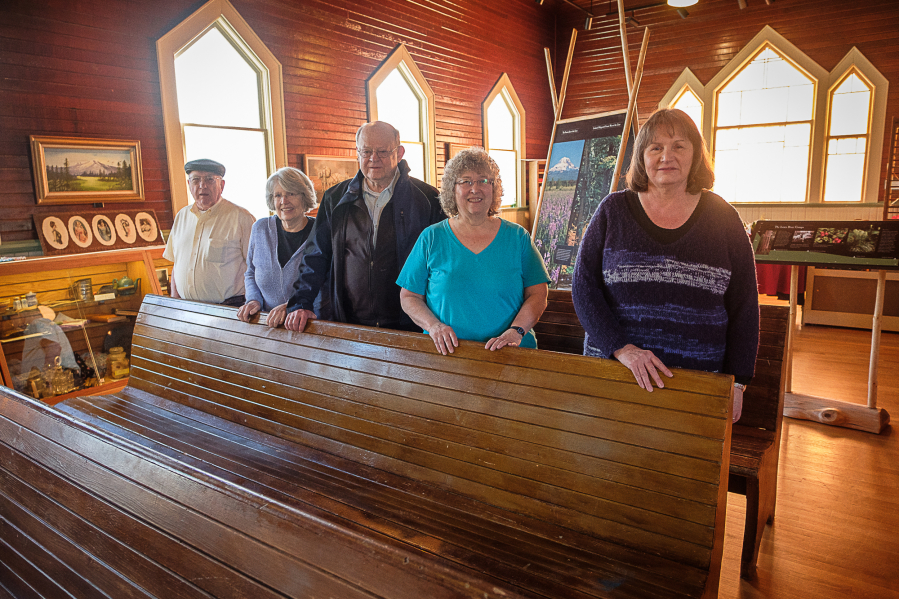Over the years, people who lived in Clark County’s northern tier didn’t worry much about their places in history.
Current residents are, in a sense, making up for lost time by ensuring that the heritage of earlier times is not lost. For almost 30 years, members of the North Clark Historical Museum have been working to preserve the area’s history.
There are three areas of emphasis, said Jim Malinowski, president of the board of directors: “Native American history, the settlers and steam logging.”
It is housed in a 107-year-old structure that was built as the Amboy United Brethren Church. The showcase is the restored church sanctuary. It’s called the Dora Young Chapel, in honor of the United Brethren circuit minister who traveled by horseback to north county communities a century ago.
When the building was acquired by the historic group, “The whole thing was ready to fall,” board member April Reichstein said. “People were afraid that one more big snow would do it in.”
The interior of the restored chapel lights up with a golden glow when the sun comes through the window. It also illuminates more than 100 years of north county history, where visitors can learn about the settlement era through vintage photographs, documents and artifacts.
Another exhibit shows that history can be an ongoing process. It’s chunk of lava, known as a bread crust bomb, from the eruption of Mount St. Helens on May 18, 1980.
But regional history goes back a lot further than the settlement era. Native American heritage is represented by artifacts such as projectile points, as well as work from current artists using traditional tribal themes. An interpretive panel charts trails around the county, and Reichstein showed how they connected local tribes with trade networks throughout the Pacific Northwest.
The museum also is documenting another version of tribal history that doesn’t have the same durability as a buried arrowhead. Volunteers are collecting stories that have been passed down through generations of Native American elders.
“We’re getting oral histories of the Cowlitz,” Malinowski said. “We’re hearing how they used the rivers” and how they gathered natural resources such as camas bulbs.
The county’s logging past is illustrated by artifacts on the church grounds. That story is documented with tools of the loggers’ trade — from axes up to industrial machinery such as “steam donkeys.”
Malinowski, whose family was part of the area’s logging heritage, said he marvels at how they could “get those heavy machines out into the woods,” and rig all the cable systems required to handle logs.
Lumber from nearby forests likely went into the old church building more than a century ago. The landmark, just off state Highway 503, also was the focus of the museum group’s first preservation effort.
After hitting the 50-year mark, the Amboy United Brethren Church survived an Easter Sunday fire in 1960 that destroyed several neighboring structures. Congregations continued to hold religious services there until 1964, when a private owner bought the property.
The restoration was led by the late Barbara Waggener, who purchased the deteriorating old church in 1988. The nonprofit North Clark Historical Museum board of directors was formed and purchased the property from Waggener. Barbara Rogers, a current board member, also was involved at the start, Malinowski said.
Frank Emerick was project manager and his wife, Roberta, was a driving force behind the fundraising effort. The late philanthropist Margaret Colf Hepola and her family were key contributors.
The museum opened in 2000. In addition to preserving the heritage of a region, the museum has brought back personal memories for visitors, board secretary Georgene Neal said.
“Some say they came to church here or to Sunday school.”




